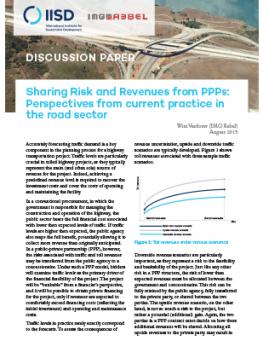
Sharing Risk and Revenues from PPPs: Perspectives from current practice in the road sector
Accurately forecasting traffic demand is a key component in the planning process for a highway transportation project.
Traffic levels are particularly crucial in tolled highway projects, as they typically represent the main (and often sole) source of revenue for the project. Indeed, achieving a predefined revenue level is required to recover the investment costs and cover the costs of operating and maintaining the facility. This paper will seek to provide recommendations on how to address downside and upside revenue scenarios in PPP contracts. This paper will present two separate but related approaches:
- The “revenue risk sharing” approach seeks to protect the concessionaire against lower than expected revenues (the “downside” scenario). The goal in revenue risk sharing is to create an optimal risk allocation between the government and the concessionaire, which in turn generates value for money (VFM).
- The “upside revenue sharing” approach seeks to share any “upside” (or higher than expected revenues) between the two parties. The goal of revenue sharing is to avoid excessive returns for the concessionaire.
This paper was funded by the Danish International Development Agency (DANIDA).
You might also be interested in
Monitoring Progress in Green Public Procurement
This report outlines the importance of monitoring progress in green public procurement (GPP) and highlights various methodologies, challenges, and recommendations.
Gender Equality at the Heart of Recovery: Advocating for Gender-Responsive Procurement in Ukraine
Ukraine is already preparing for reconstruction, which will cost an estimated USD 411 billion and take at least 10 years. The integration of gender considerations into public procurement processes could generate greater inclusivity in a rebuilt Ukraine.
A Sustainable Asset Valuation of Non-Motorized Transport in Coimbatore, India
A Sustainable Asset Valuation (SAVi) of the economic, social, and environmental benefits of a non-motorized transport (NMT) network in Coimbatore, India.
FAQ: Legal Considerations When Using the CO2 Performance Ladder in Public Procurement
This report answers frequently asked questions about the legal aspects of using the CO2 Performance Ladder as a green public procurement tool.